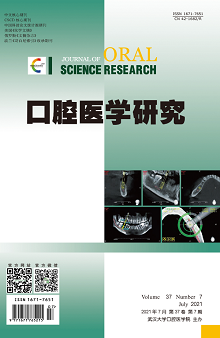|
|
Long-term Clinical Effect of Implantoplasty Combined with Er:YAG Laser on Peri-implantitis
YANG Chunshan, XU Wei, LIU Ying, FAN Zhe, MENG Qi, YANG Chunjiang, ZHENG Jia
2021, 37(7):
612-616.
DOI: 10.13701/j.cnki.kqyxyj.2021.07.008
Objective: To evaluate the long-term clinical efficacy of implantoplasty combined with Er:YAG laser in the treatment of peri-implantitis. Methods: From January 2015 to January 2017, 114 patients which diagnosed as peri-implantitis were selected from the Department of Stomatology, Tangshan Union Medical College Hospital, including 120 implants (molar, using the Switzerland ITI implant). The patients were randomly divided into three groups (40 implants in each group), in which the implants of group A were treated with the combination of implantoplasty and Er:YAG laser, the implants of group B were treated with the implantoplasty, and the implants of group C were treated with Er:YAG laser. The implant plaque index (PLI), sulcus bleeding index (SBI), periodontal probing depth (PD), and intraoperative pain of patients in the three groups before and 1, 6, 12, and 36 months after treatment were evaluated, recorded, and compared. Results: After different treatments, PLI, SBI, and PD in the three groups were significantly improved. After 36 months treatment, the improvement of PLI, SBI, and PD in group A was significantly better than those in group B and group C, and there was no significant difference between group B and group C. In addition, intraoperative pain occurred in all three groups, and the incidence of intraoperative pain in group C was significantly lower than those in group A and group B, but there was no significant difference between groups A and B. Conclusion: The long-term clinical effect of the surface implantoplasty combined with Er:YAG laser on peri-implantitis is better than that of the single application of implantoplasty or Er:YAG laser.
References |
Related Articles |
Metrics
|

